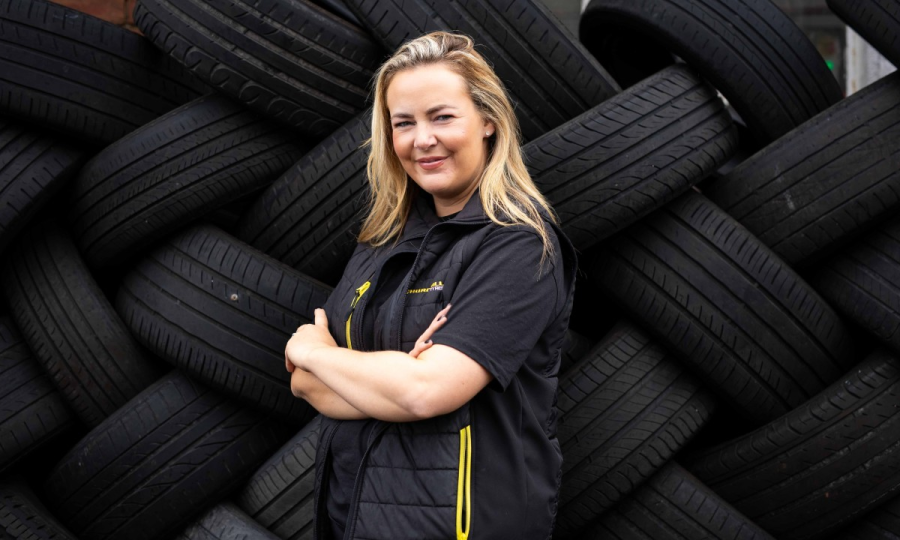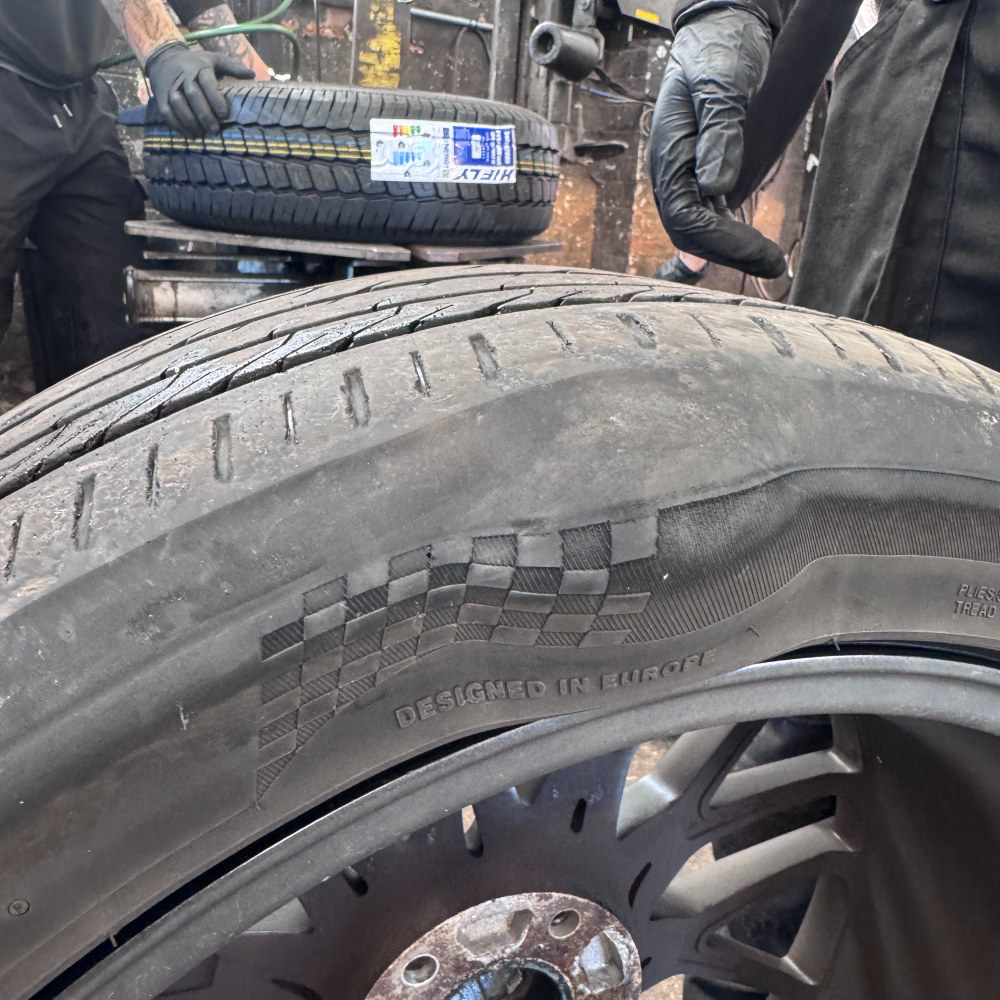
For years, I’ve been known as The Tyre Lady. My journey has taken me from tyre testing to tyre education and awareness work. But today, I want to push the conversation further. Because there is one hidden danger on our roads that we cannot afford to ignore any longer: defective tyres.
Every motorist knows about speeding, drink-driving, or mobile phone use as dangers behind the wheel. But what about the fact that the only thing between your vehicle and the road is four patches of rubber — each barely the size of your hand?
When tyres are bald, underinflated, cracked, or otherwise unsafe, they don’t just put one driver at risk. They put all of us at risk.
In the UK alone, over 6 million tyres are estimated to be illegal at any given time. And every year, more than 150 people are killed or seriously injured in collisions caused by defective tyres. That is preventable harm — and it is unacceptable.
We need bold, structural changes that tackle this problem at every level: education, enforcement, and culture. That’s why I’m calling for a three-pillar approach to changing the road network for good.

Too often, young people leave school without ever being taught how the cars they will one day drive actually work. We teach algebra, Shakespeare, and physics — but not how to check if your tyres are safe.
I propose adding basic tyre knowledge into the curriculum, particularly in further education courses. This would include:
This isn’t about creating mechanics out of everyone. It’s about building a baseline of awareness. Every young person should know how to recognise when their tyres are unsafe — before they set foot in the driver’s seat. 2 defective tyres in their first year of driving leads to their license lost. So why risk it?
Learning to drive is stressful, expensive, and full of requirements. But we miss a huge opportunity if we don’t teach how to care for the car — especially the tyres.
My suggestions:
This way, when someone gets their licence, they won’t just know how to drive — they’ll know how to care for the car that’s carrying their life.
Vicky Folland from Vickys Driving Tuition said ''Show and tell questions in the current test often just lead to learners memorising words without really understanding them. Actually doing the checks-looking at tyres, measuring the tread, checking pressures-makes the knowledge stick and builds confidence for real-life driving. The idea of a pre-drive checklist is brilliant too; it turns car care into a habit rather than just a test answer. This would make new drivers safer, more responsible and much more aware of their vehicle.
Graham from Westgate Tyres (My Dad) came up with the idea originally. We’ve accepted speed cameras, red-light cameras, average speed checks. Why not a system that checks for dangerously worn, bald, or damaged tyres automatically?
Here’s how a tyre-camera system could work:
I’m not naïve — this system should not be about revenue. It must be about safety first. But once the technology is mature and trust is built, it becomes a disincentive to drive on illegally worn or unsafe tyres.
As someone working at the forefront of road safety technology, I fully support this proposal. I have seen how smart systems on the highway, from speed indicators to automatic number plate recognition cameras, make measurable differences across the UK, reducing collisions, encouraging better driving behaviours, and saving lives. Technology is not just advancing, it is already delivering. Intelligent detection systems are now in daily use to monitor speed, heights, and vehicle behaviour, so extending this proven approach to tyre condition is both logical and essential. Worn or damaged tyres remain an under addressed risk on our roads and is often invisible until too late. A system capable of identifying tyre defects in real-time could be pivotal in tackling one of the most preventable causes of serious accidents. This innovation has the potential to transform how we think about vehicle safety. - Olly Samways Sales Director Westcotec/Founder of Racing4RoadSafety.
“The laws on tyres are outdated and far too weak. There’s no real deterrent for drivers, which is why we see an estimated six million unsafe tyres on UK roads at any given time. That is unacceptable. I’ve worked in the tyre trade for over 40 years, and the legislation hasn’t moved on since the days of Morris Minors and Austin 11s. Today’s high-performance vehicles demand far higher safety standards, yet we still allow tyres to be worn down to 1.6mm. At 2mm or 3mm, the risk of losing grip in wet conditions skyrockets — and lives are at stake. Across Europe, the law is stricter. So why not here? I fully support raising the minimum tread depth in the UK, and I believe tyre cameras are the future. With them, we could finally crack down on this hidden danger and make our roads truly safe.” Graham Bailey - Owner Westgate Tyres- a Family run business based in Morecambe (Home of the Tyre Lady)
Individually, each of these proposals — education, driving lessons, tyre cameras — would save lives. Together, they could transform our road safety culture.
The ripple effects are huge:
We’ve made huge strides in seatbelt use, in tackling drink-driving, and in cracking down on speeding. Now it’s time to do the same for tyres.
NTDA fully supports a call to Government to increase the minimum legal tread depth from 1.6mm to 2.00mm. Ian Andrew CEO NTDA stated ''This change in 0.4mm, while barely visible to the human eye will have significant impact on peoples safety while driving, especially in wet weather''
As The Tyre Lady, I’m not asking for small tweaks. I’m asking for a national conversation about tyres — and for government, industry, and drivers themselves to step up.
We can change the road network for good. We can make our journeys safer. And we can do it, quite literally, one tyre at a time.
Connect with Sophie: https://www.linkedin.com/in/sophielyden/
Disclaimer: This content may include forward-looking statements. Views expressed are not verified or endorsed by Tyre News Media.